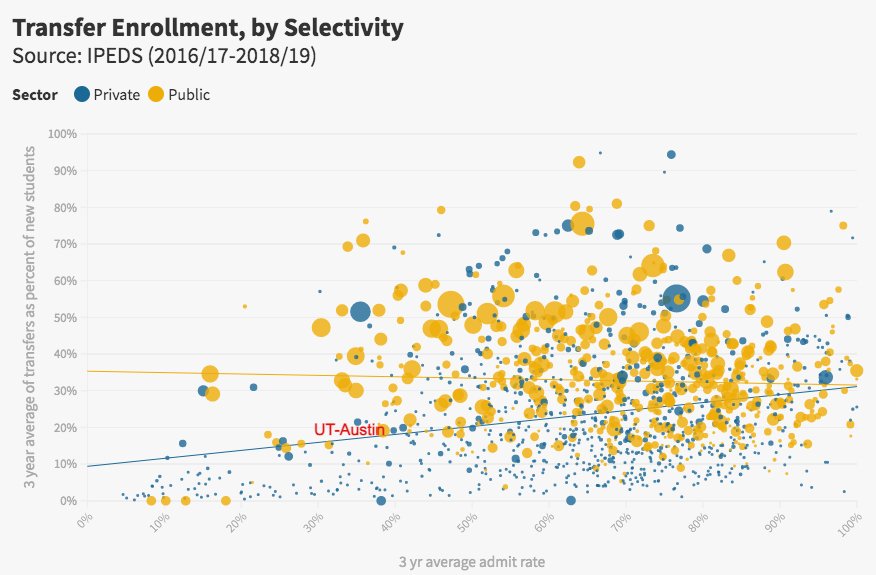I had a good conversation today with a very young reporter who wanted to discuss the @EdReformNowUSA Social Mobility Elevators brief and how highly selective colleges can increase social mobility.
And we ended up talking a lot about TRANSFER! http://edreformnow.org/wp-content/uploads/2020/11/Social-Mobility-Elevators-Issue-Brief.pdf
And we ended up talking a lot about TRANSFER! http://edreformnow.org/wp-content/uploads/2020/11/Social-Mobility-Elevators-Issue-Brief.pdf
Transfer deserves to be included in many more conversations about college access and completion. How come?
To begin with, lots of students transfer: almost 40% of college students transfer to another institution, according to @NSClearinghouse.
To begin with, lots of students transfer: almost 40% of college students transfer to another institution, according to @NSClearinghouse.
Transfer is an important path to a bachelor's degree for many students who start at community colleges, but transfer rates reveal serious racial gaps.
One of the biggest problems with transfer, esp when it's from 2yr to 4yr colleges, is credit transfer. If 4yr schools won't take some credits from community colleges, it means students have to spend more time (and $$$) earning a degree. Some states have made transfer easier.
When it comes to transfer at most highly selective colleges, the big issue is that most of them DON'T ENROLL ENOUGH TRANSFER STUDENTS.
Here's a chart I made to show what I mean.
Here's a chart I made to show what I mean.
The Chart:
~1,500 colleges, 2016/17-2018/19
x-axis: acceptance rate
y-axis: percent of new students per year who are transfers (e.g., at @UTAustin ~8,700 freshmen & ~2000 transfers enroll each yr, so 19% of new students are transfers)
Dot size: count of transfers.
~1,500 colleges, 2016/17-2018/19
x-axis: acceptance rate
y-axis: percent of new students per year who are transfers (e.g., at @UTAustin ~8,700 freshmen & ~2000 transfers enroll each yr, so 19% of new students are transfers)
Dot size: count of transfers.
Transfer enrollments generally play a bigger role at publics (except the service academies), and they play a very small role at most super selective private colleges: look at all those tiny blue dots in the bottom left corner.
But also check out @USC, @UCBerkeley, and @UCLA.
But also check out @USC, @UCBerkeley, and @UCLA.
One of the most absurd things about college admissions is that consequential decisions about people's futures are made based on who they are at 17 or 18. Refusing to enroll significant numbers of transfer students is doubling down on that absurdity.
@princeton accepted 0 transfers, *as a policy*, between 1990 and 2018. For the past 3 years they have accepted 13. No big surprise that transfer apps declined so much when your acceptance rate is 0.9%.
It's not just Princeton. Most super selectives enroll a tiny number of transfer students. Plus, we have no idea how many of those transfers are lateral moves, rather than transfers from 2-years.
I'm totally on board with @FrankBruni's argument that where you go to college is not your destiny, but it's also true that super selective colleges have a larger impact on low-income students' economic prospects and they have an outsized influence on American power and wealth.
If super selectives want to make a genuine commitment to diversity and having a large impact on social mobility, transfer needs to play a large role in that commitment.
If you want to see @EdReformNowUSA's complete Social Mobility Elevators ranking: https://edreformnow.org/blog/social-mobility-elevators/
For an interactive version of the transfer-selectivity visualization: https://public.flourish.studio/visualisation/4615206/

 Read on Twitter
Read on Twitter










